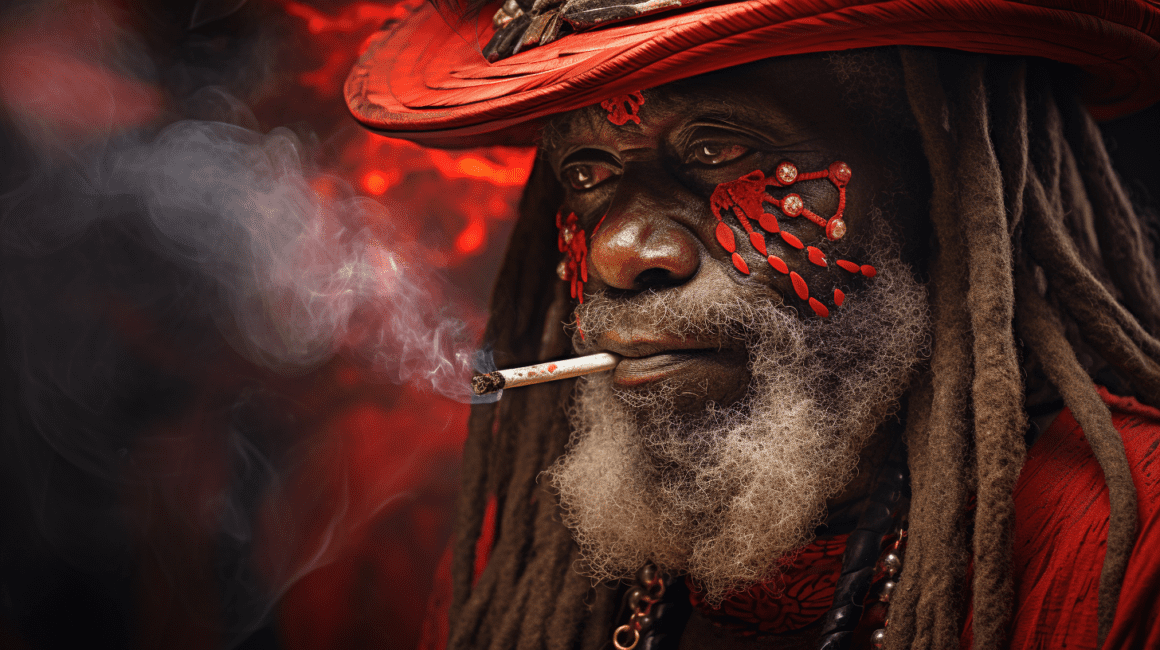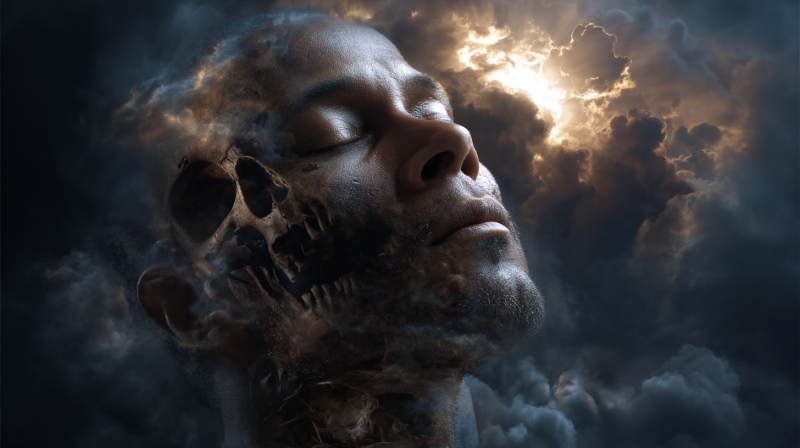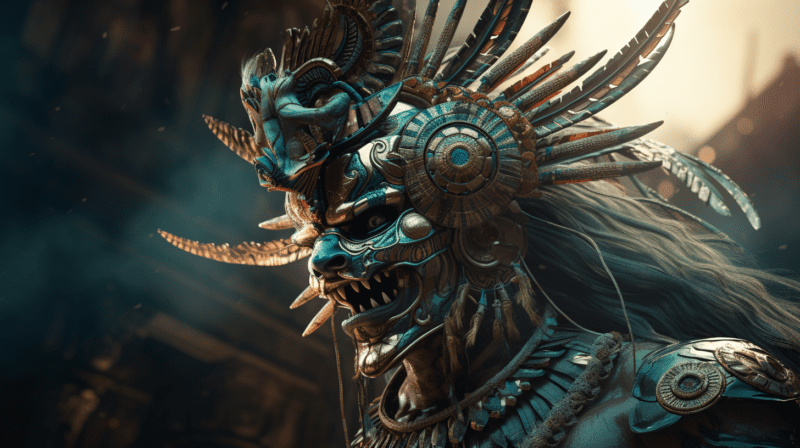Lord of the Crossroads
Eleguá (Elegguá) is sometimes depicted as a child and other times as an elderly man. He signifies the beginning and end of life, as well as the opening and closing of life’s paths. He enjoys playing practical pranks on people and is sometimes referred to as the trickster. He is fond of candy and toys. Despite his infantile demeanor, he is an extremely powerful orisha. He is a member of the Warriors, along with Ogn, Ochosi, and Osun. Eleguá is always mentioned first in any ritual since the connection with the other Orishas is impossible without his permission.
Eleguá’s colors are red and black. His number is three, or any multiple of three. His weekday is Monday, and the third day of each month is his birthday. In Cuba, his “saint’s days” are traditionally celebrated on January 6th and June 13th. On certain days, a feast in his honor may be held. Eleguá is associated with the Child Jesus of Atocha, Saint Anthony of Padua, and the Anima Sola in the Catholic Church (soul in purgatory).
Eleguá enjoys toys associated with children’s play, such as kites, whistles, balls, and toy soldiers. He also has a liking for keys, silver coins, a shepherd’s crook, and a straw hat. He wears red and black, with knee britches in the style of Spanish colonialism. He wears a red kerchief, cap, or straw hat on his head. When he dances, he is lively and wants others to notice him.
He enjoys cigars, toasted maize, coconuts, aguardiente (strong alcohol) or vino seco (white cooking wine), smoked hutia meat, smoked fish, and red palm oil in addition to sweets. As a way of paying appreciation to him, he should be given something he enjoys on Mondays.
A practitioner may discover that he requires Eleguá through divination with a Santero or Babalawo. Eleguá is sometimes offered alone, and sometimes with others. A stone representing Elegua is prepared and charged with the Orisha’s aché, or magical energy, at a ritual ceremony. The stone is usually formed like a head, with a cement exterior layer and cowrie shells for eyes and lips. He resides inside the house in a shallow clay dish, usually behind the door. When practitioners obtain Eleguá and the other warriors, they are classified as “medio asentados,” or “halfway initiated.” They cannot carry out all of the responsibilities of an Oloricha (priest/priestess), but they have made a strong commitment to the religion.
Eleguá’s eleke (beaded necklace) is made out of one red and one black bead repeated in a design. The necklace’s hue and design represent life and death, war and peace, and the beginning and end of all things. Eleguá is known as the Lord of the Crossroads because he influences every decision we make in life. Things run smoothly with his assistance. But he can also throw barriers in our path, causing our lives to take unexpected and undesirable twists. Most Santera practitioners understand how critical it is to keep excellent relations with Eleguá since without him, nothing is possible.
ESHU is not the same as Eleguá; they are like two sides of the same coin, having distinct yet inextricably linked identities.
Eshu can be thought of as Eleguá’s shadow, or his reflection in the mirror. They are diametrically opposed in many aspects. Eshu is more wild and unpredictable than Eleguá, thus Santeros/as do not confine him to the house.
Every Santeros/a has an Eleguá who resides behind the front door, although not everyone receives an Eshu. If someone needs an Eshu, he is usually supplied by a Babalawo, especially in Ifa-centric societies. Eshu dwells outside, in the garden, or in a crevice to the side of the entrance door. Eshu and Eleguá are both tricksters, but Eshu’s tricks can be unpleasant or destructive. Outsiders have incorrectly labeled Eshu as the devil – he isn’t; there is no devil in Santera – but Eshu can certainly be mischievous, and we shouldn’t mess with him since he’s a very powerful force when riled up.
In Santera, no one is ever crowned with Eshu on the head, although many individuals are crowned with Eleguá. Only Eleguá wears elekes devoted to Eshu. According to the patakis, Eshu enjoys eating and can be soothed by food, thus a wooden bowl of table scraps is sometimes left outside the home for Esh. Eleguá can also keep him in check because the two of them understand each other and frequently walk side by side.
Eshu and Eleguá can be interpreted metaphorically as polar opposites, the negative and the positive, the dark and the light. They collaborate to achieve life balance since we cannot enjoy the positive without the negative. Life contains both good and terrible. Eshu isn’t truly bad; he’s simply less civilized than the other Orichás. In many ilés, Eshu is not considered an Orichá in and of himself, but rather a component of Eleguá. Regardless of how we perceive the Eleguá/Eshu dichotomy, we can’t imagine Eleguá without also considering Eshu. It would be like attempting to comprehend daylight if we had never experienced night.
Within Haitian Voodoo and other Afro-Caribbean traditions, Elegua is known as Papa Legba.

Papa Legba holds a significant place in the pantheon of deities within these spiritual practices. He is considered to be the gatekeeper between the human world and the divine realm. As the intermediary between the two, Papa Legba is believed to have the power to open or close the door to communication with the spirits.
In Haitian Voodoo, Papa Legba is often depicted as an old man with a cane, wearing a straw hat, and smoking a pipe. He is associated with crossroads, as he is believed to reside at the intersection of different realms. This symbolism represents his ability to navigate between the physical and spiritual worlds.
Devotees of Voodoo and other Afro-Caribbean traditions often call upon Papa Legba to open the way for communication with other spirits or deities. They believe that by honoring and appeasing him, they can gain his favor and receive blessings, guidance, and protection.
Papa Legba is also known for his role as a trickster. He is said to have a mischievous nature and enjoys playing pranks on humans. However, despite his playful demeanor, he is highly respected and revered within these traditions.
It is important to note that while Elegua and Papa Legba are often used interchangeably, they may have slight variations in their characteristics and attributes depending on the specific cultural context. Nevertheless, both represent the vital role of the gatekeeper in Afro-Caribbean spiritual practices.
In conclusion, Papa Legba, also known as Elegua, holds a significant place within Haitian Voodoo and other Afro-Caribbean traditions. As the gatekeeper between the human and divine realms, he is believed to have the power to open or close the doors to communication with spirits. By honoring and appeasing Papa Legba, devotees seek his guidance, blessings, and protection.





